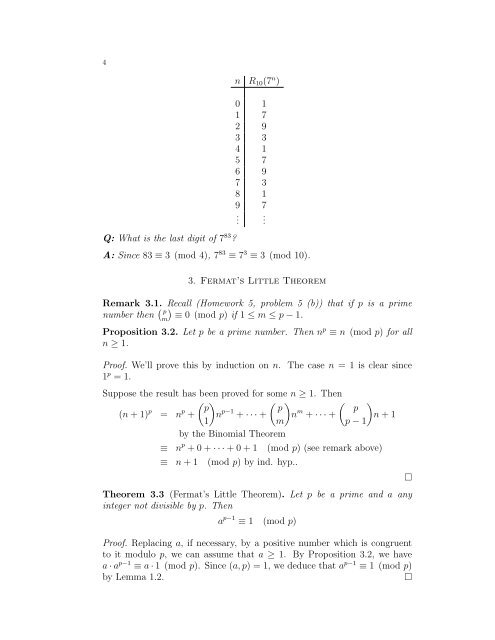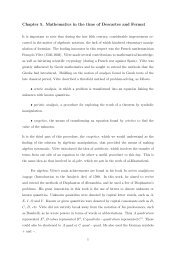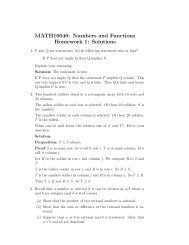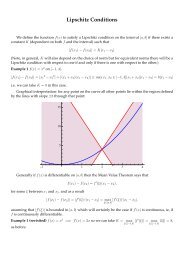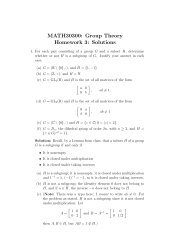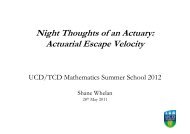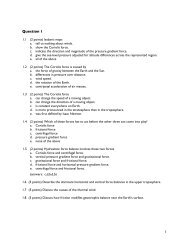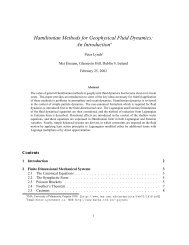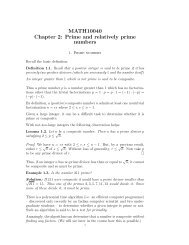MATH10040 Chapter 5: Fermat's 'Little' Theorem
MATH10040 Chapter 5: Fermat's 'Little' Theorem
MATH10040 Chapter 5: Fermat's 'Little' Theorem
Create successful ePaper yourself
Turn your PDF publications into a flip-book with our unique Google optimized e-Paper software.
4Q: What is the last digit of 7 83 ?n R 10 (7 n )0 11 72 93 34 15 76 97 38 19 7A: Since 83 ≡ 3 (mod 4), 7 83 ≡ 7 3 ≡ 3 (mod 10)..3. Fermat’s Little <strong>Theorem</strong>Remark 3.1. Recall (Homework 5, problem 5 (b)) that if p is a primenumber then ( pm)≡ 0 (mod p) if 1 ≤ m ≤ p − 1.Proposition 3.2. Let p be a prime number. Then n p ≡ n (mod p) for alln ≥ 1.Proof. We’ll prove this by induction on n. The case n = 1 is clear since1 p = 1.Suppose the result has been proved for some n ≥ 1. Then( ( ( )p p p(n + 1) p = n p + n1)p−1 + · · · + nm)m + · · · + n + 1p − 1by the Binomial <strong>Theorem</strong>.≡ n p + 0 + · · · + 0 + 1 (mod p) (see remark above)≡ n + 1 (mod p) by ind. hyp..<strong>Theorem</strong> 3.3 (Fermat’s Little <strong>Theorem</strong>). Let p be a prime and a anyinteger not divisible by p. Thena p−1 ≡ 1 (mod p)Proof. Replacing a, if necessary, by a positive number which is congruentto it modulo p, we can assume that a ≥ 1. By Proposition 3.2, we havea · a p−1 ≡ a · 1 (mod p). Since (a, p) = 1, we deduce that a p−1 ≡ 1 (mod p)by Lemma 1.2.□□


